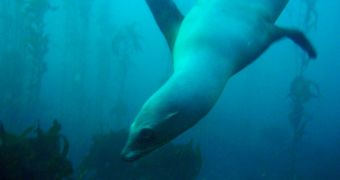Experts managing the US Integrated Ocean Observing System (IOOS) announced that the monitoring network will soon start to incorporate biological components as well, in the form of data collected from tags attached to a variety of marine animals.
This will allow researchers to get a more integrated view of the changes the world's oceans and their inhabitants are going through. These data may also lead to a better understanding of the effects climate change is having on the water.
Experts will also find out how marine species move around in the oceans, harnessing the flow of tides and the power of currents in their favor. In turn, this may provide additional insight into how creatures modify their migration or feeding patterns in response to global warming.
Tagging technology entered mainstream use with marine biologists in the early 1990s. Since then, experts have placed tracking beacons on species such as tuna, sharks, sea turtles, seals, whales, salmon, squid and crustaceans, among others.
The advantage of using this research method is that the animals are being tracked over multiple years, and all over the planet. The original investment in the sensors is promptly offset by the fact that experts no longer have to make costly voyages to observe and track the animals directly.
“The vastness of the ocean limits our ability to observe,” explains the Stanford University Prothro professor of marine sciences, Barbara Block.
“Data from these animals are transforming the way scientists study our waters and opening up new data sources,” adds the director of the IOOS, Zdenka Willis.
“With the broader science community becoming more engaged and linking to IOOS, we will be able to provide information more readily to the state and federal officials who need it most,” the official adds.
“This technology is leading to profound advancements in our understanding of these animals and how they interact with the ocean. This knowledge translates to a better understanding of our planet and emerging issues on climate change,” Block argues.
The data integration process between the IOOS and the animal tagging community may begin as early as this autumn, experts say. The National Oceanic and Atmospheric Administration (NOAA) Santa Cruz Laboratory was recently the host of a convention meant to draw the guidelines to this collaboration.
“The animal tagging community has made great strides in data sharing, collection and analysis, but we want to create a stronger bridge among these scientists and other ocean observers,” concludes the director of the Santa Cruz lab, Churchill Grimes, PhD.

 14 DAY TRIAL //
14 DAY TRIAL //